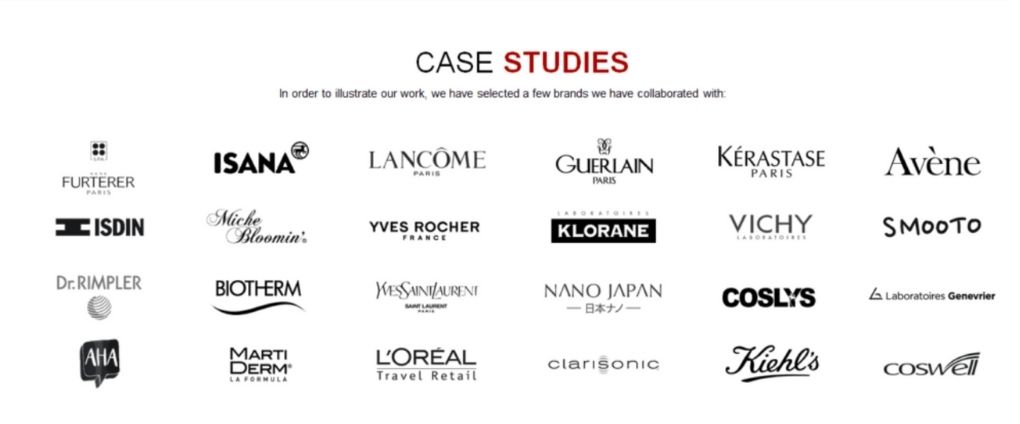As one of the world’s largest economies with a population of over 1.4 billion people, China presents an attractive market for many brands. Its consumers have a diverse and constantly evolving appetite, creating opportunities for new products and services.
With rising wealth and demand across the nation, businesses are often asking “How can we enter the Chinese market?” and “What are the challenges of doing business in China?”
Additionally, Chinese consumers have a strong affinity for branded goods, making it an even more enticing market for businesses. Our answer — it’s very hard if you do not use the right China market entry strategies.
Even when you see similar products and services performing well in the market, that doesn’t mean you will be met with the same success. So what shouldn’t you do?
What are the common mistakes when entering the Chinese market?
Currently, we’ve seen a strong demand for premium Korean cosmetics and luxury handbags and cars, which presents an exciting opportunity for businesses selling those products. However, solely having a strong demand is not enough to keep your business afloat in the competitive Chinese market.
Businesses should consider their resources, previous export experience, and long-term business strategy when creating the right China market entry strategies. Like any entry into a new market, the rewards of a successful venture are great — but so are the risks. Here are a few of the reasons we have seen businesses fail their China market entry — and how you can avoid them.
1. Your Preconceived Notions About the Chinese Market Are Wrong
The mistake many businesses make is assuming that traditional marketing strategies will work in the local market, but local brands have stepped up their game and are now able to compete in the premium category within China.
Fifteen years ago, foreign brands were seen as classy and rare, but today local brands have their own attractive features and reliable quality, meaning that transplanting an existing brand may not be successful.
Beginning from the way you deploy advertising and tailor packaging, it is crucial to understand how you are presenting your brand to Chinese consumers and how they are responding to it. Research is the name of the game — learn about how the market is truly behaving instead of making assumptions.
What Are Some Concerns About Entering the Chinese Market?

Here are some key concerns you should keep in mind when learning more about how to enter the Chinese market:
- The market is incredibly competitive, and both domestic and foreign brands are competing for space.
- Domestic Chinese brands have established a presence in premium spaces. As a matter of fact, the top-selling beauty brand in China in 2022 was Florasis and Perfect Diary.
- China has unique attributes that you are not familiar with — such as strict government regulation in certain industries and long-standing consumer attitudes that may never shift.
- Long-term planning may be difficult, but it is easier with proper research — and if you let go of your preconceived notions first.
- There are huge differences between China’s many market segments — Tier 1 cities vs Tier 2 and 3 cities, urban vs rural markets, etc
2. You Don’t Adapt to Changes Quick Enough

When you think of long-term plans, you’re likely envisioning changes years down the line — but with China’s rapid evolution, the “long-term” changes you are thinking of can arrive quicker than you are prepared to deal with.
Creating good China market entry strategies requires you to be quick on your feet because being unable to adapt to changes will lead your China market entry to fail.
In order to react quickly, you need a detailed understanding and solid framework for consumer attitudes and local conditions, which will allow you to monitor what is changing, how fast these changes are coming, and which direction they are coming from.
Fortunately, Chinese consumers are very tech-savvy, and most of them are active on the country’s many social media platforms (WeChat, Weibo, Kuaishou, Douyin, and Baidu Tieba, to name a few), which is useful for conducting online research with fast turnaround.
Using online and face-to-face research (which is still the best way to test the behavior of your consumers), you should aim to gather data that lets you tailor your approach to their changing expectations and requirements.

3. You’re Not Targeting the Right Audience
The Chinese market is enormous, and it is in no way homogenous or uniform. Instead of undertaking the foolish task of targeting the entire market, the right China market entry strategies should focus on defined geographic niches.
Between provinces, there are huge economic and cultural differences, such as lifestyles, population levels, average income levels, per capita GDP, consumer spending habits, education levels, literacy rates, and more.
Rather than treating China as a single market, it is best to view it as a collection of sub-markets with their own demographics. Given China’s large population, even niche markets provide a substantial amount of prospective consumers.

Typically, the Tier 1 cities of Shanghai, Beijing, and Guangzhou are where foreign companies try to enter the Chinese market, as those markets have the most experience with doing business with foreign companies.
The same is true of several higher-income coastal provinces such as Zhejiang, Guangdong, and Jiangsu.
However, as the market is highly competitive in these locations, companies are increasingly looking to target Tier 2 and Tier 3 cities. As per usual, market research is instrumental in finding the right geographic niche for your business.
4. Your Branding Is Out of Place
Branding is a key component of your China market entry strategies because China consumers are very sensitive to brand image and place a significant emphasis on brand trust.
Instead of assuming that you can simply exploit the brand equity of a well-known international brand, you must take a look at what your competitors are doing — and whether or not their strategies are working.
With some products or services, halo effects may not work, and changing your branding for the market may be better.
In other cases, you might want to take full advantage of an existing brand to establish a presence. In either scenario, you should always ensure that you are not compromising your overarching brand story — do not lose what your brand stands for just to enter the Chinese market.

Embrace the local platforms. The Chinese online landscape is very different from the West, and most Western brands have had little success reaching Chinese consumers through Western channels, instead, bet on Chinese social media (WeChat, Weibo, Xiaohingshu, and so on) and Chinese search engine Baidu.
Chinese consumers are much more likely to purchase products through online marketplaces like Tmall or JD.com, so it’s important to have a strong presence on these platforms if you want to succeed in China.
For successful beauty brands localization in China, look at global brands such as Lancome and Estee Lauder, Shiseido, S-KII, and so on. You can have a glimpse at their Chinese Market entry strategy here.

5. Chinese Laws & Regulations are obscure to you
One of the stumbling blocks in entering the China market is local government policies and regulations. It is imperative that you understand how your product or service is regulated within the country and which agencies handle that regulation.
In certain industries — such as food and healthcare — there are greater levels of regulation. In addition, there are severe restrictions on the involvement of foreign companies in the petrochemicals, energy, and telecommunications industries.
To help you understand the local landscape better, it is advisable to look towards Chinese agents, distributors, or partners that can provide you with essential local knowledge and contacts. Chinese partners can be critical to your success in China, so choose them carefully.
6. You’re Not Prepared for the Competition
As mentioned, the Chinese market is highly-competitive, yet some businesses that enter the Chinese market are unprepared for the true extent of it. One such area that companies do not expect difficulty in is the protection of their intellectual property rights (IPR). IPR infringement is unfortunately common in China, partly because of its “first-to-file” approach to patents and trademarks.
Even if your patents and trademarks are legally yours under your country’s copyright laws, the “first-to-file” system allows companies to register another company’s patents or trademarks even if they are not the original owner.
To protect your IPR, you should ensure that you register them with the China Trademark Office as soon as possible and as extensively as possible (for example, registering trademarks across different categories and in both Chinese and English).
7. You don’t understand the culture
In China, multinational firms often face the challenge of needing to localize their marketing campaigns in order to be successful. Unfortunately, not all of them are able to do so effectively. One global cosmetics brand that failed to localize its marketing campaign in China was Procter & Gamble’s Olay.
Olay’s original marketing campaign in China was based around the tagline “porcelain skin.” However, this quickly backfired as Chinese consumers felt that it was implying that they were not already beautiful. In addition, the word “porcelain” is also associated with old age in Chinese culture.
As a result, Olay’s sales soon tanked in the country.
Conclusion: Plan Your China Market Entry Strategies
When you keep these common failures in mind, you can begin figuring out how to strategically plan a step-by-step market entry in China. These are the five basic steps you can follow:
1. Market assessment: Understand consumer interest and growth potential for your products or services before trying to enter the market.
2. Benchmark analysis: Gain data-proven insights and metrics on the best practices for market entry by using the cases of successful market entrants.
3. Consumer experience and concept testing: Collect feedback from your intended consumers and local professionals on the value proposition you are offering.
4. Consumer segmentation: Identify the key segments you should be targeting to ensure the best chance of success.
5. Implementation design: Design a road map for your first few years in China, including investment allocation, revenue models, and network building.
Always remember that while trying to enter the Chinese market is difficult and many have tried and failed, employing the right China market entry strategies can help you achieve success and grow your business in an immensely attractive market.
Need help with your China Market Entry Strategy?
We are a China-based agency with more than 10 years of experience in the Chinese market. We helped many foreign clients in China, by offering our expertise and experience in this competitive landscape.
Our team of Chinese and foreign experts will be happy to help, by sharing local market knowledge and consumer insights with you and help you deal with all the necessary paperwork.
We also offer many different, cost-effective services, such as:

If you’d like to know more or you’re interested in entering China market for the first time, look no further. Contact us, we have hundreds of brands enter the market successfully! Let us help you develop a perfect market-entry strategy for China!



